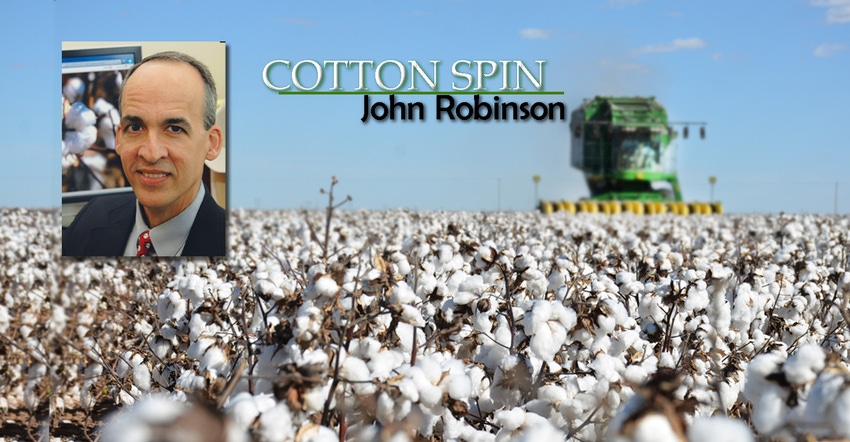
USDA’s March supply/demand adjustments to their old crop world cotton balance sheet were neutral to bearish going strictly by the numbers. On the world supply side, beginning stocks were a net 870,000 bale fewer compared to the previous month, as a 1.25 million bale increase in China was trimmed by 290,000 bales in Uzbekistan. But world production was 720,000 million bales greater than the February forecast, with gains in China (1.0 million), Australia (500,000), Uzbekistan (200,000), and Mexico (50,000) outweighing month-over-month cuts in India (-1.0 million) and West Africa (-20,000).
World imports were reduced 860,000 bales month-over-month, mostly in China (-250,000), Bangladesh (-200,000), Pakistan (-200,000), Indonesia (-100,000), Turkey (-100,000), and Uzbekistan (-30,000). Similarly, world exports were 780,000 bales fewer compared to February, with the major adjustments coming in Brazil (-300,000), India (-300,000), West Africa (-300,000), and Uzbekistan (-50,000).
World domestic use was 550,000 bales fewer, month-over-month, due to decreases in Turkey (-300,000), Pakistan (-200,000), Bangladesh (-100,000), and Indonesia (-100,000), and only minimally offset by a 150,000 increase in Uzbekistan. The overall summary of the world adjustments is bearish looking given the downshifting of the demand numbers by USDA.
The U.S. all cotton supply and demand numbers were unchanged compared to last month, leaving ending stocks at 4.3 million. USDA is apparently kicking the production adjustment can down the road until the May WASDE.When it comes, I don’t expect it to be more than a 100,000-bale adjustment to USDA’s current estimate of U.S. 2022 production. So, I wouldn’t expect a major rally in ICE futures based on that.
But, as Randy Travis sings, ‘On the other hand…' there are emerging demand issues that might paint a more bullish picture for the end of the current marketing year. First, there are mostly anecdotal reports of economic stabilization in China following their post-pandemic re-opening. Then there is a counter argument that the world cotton demand picture is not as fundamentally bad as USDA paints it. This view attributes weakness in ICE futures more to “artificial” reasons, e.g., the result of the currently large short speculative position.
The lower prices dip into the 70s, the closer they are to China’s historical price point for large scale buying of U.S. cotton. And as we progress into the spring and summer, we enter the season when China historically mopped up available U.S. stocks at the lowest prices. If that were to happen, that could spark a fundamental rally with short covering jet fuel. Of course, all this assumes no international conflicts or worsening of world economies.
For additional thoughts on these and other cotton marketing topics, please visit my weekly on-line newsletter at http://agrilife.org/cottonmarketing/.
About the Author(s)
You May Also Like




